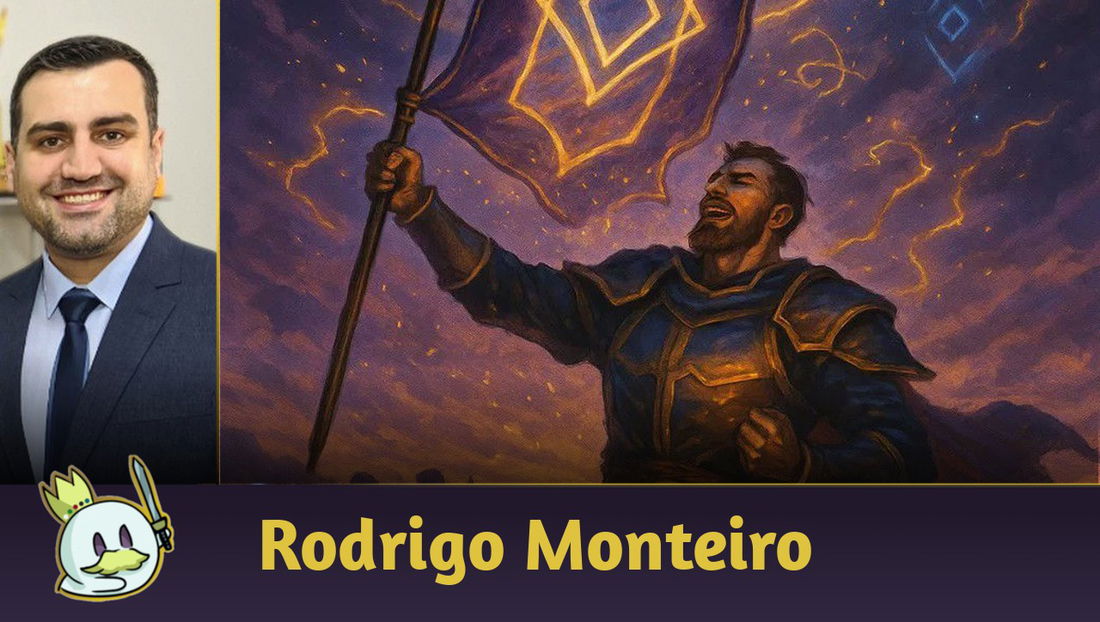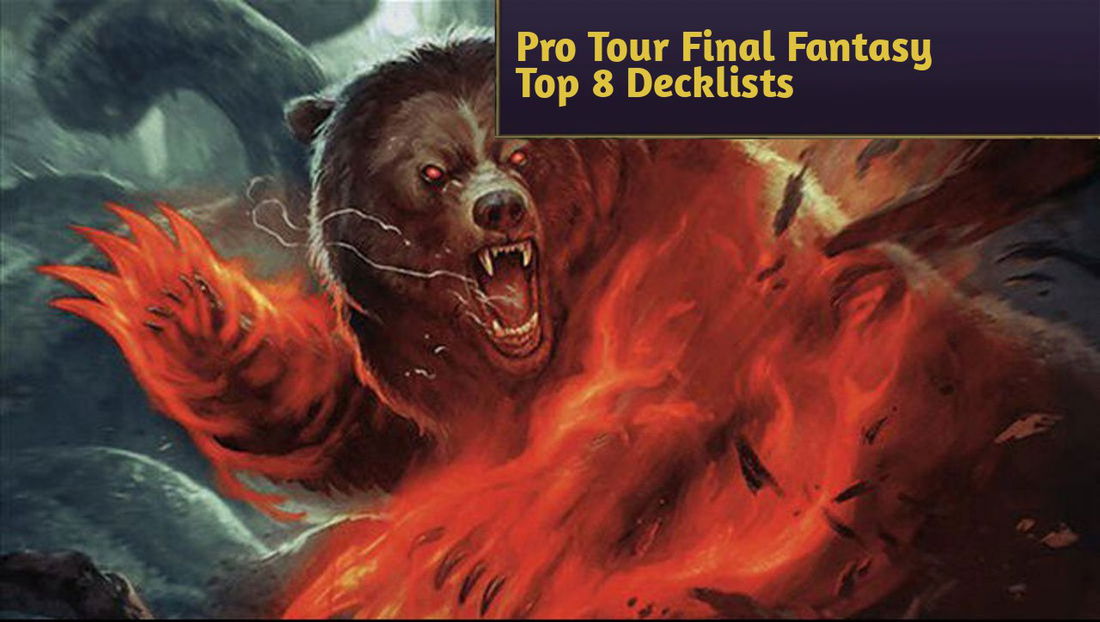On June 30, Magic: The Gathering will release its next Banned and Restricted update for the game's major competitive formats. Unlike other announcements, this one will likely focus on Standard, as part of the ongoing yearly maintenance project that Wizards of the Coast has proposed as a way to maintain financial stability in investing in it, while also paving the way for the rotation on August 1 with Edge of Eternities.
While it's possible that other formats will be affected, especially with unbans, the bulk of this banlist and the discussion surrounding it is focused on Standard. Specifically, the community is hoping that the inherent issues that have plagued the format for the past few months—the dominance of Izzet Prowess and other Red Aggro being the main one—will finally be resolved after this date.
At this point, there’s a lot to discuss about Standard: at least ten cards could be mentioned as potential bans for the weekend, and there are a number of ways Wizards could address player concerns and the format’s issues in the next announcement. In this article, we’ll explore these possibilities, assessing them on a case-by-case basis, and considering what routes might be taken later this month.
It’s worth noting that this article is being written before Pro Tour Final Fantasy. I am mostly sure that the results of this tournament won’t change the format’s upcoming changes, unless something breaks the format in half to the extent of Nadu, Winged Wisdom in Modern.
Even in this case, if, for example, Vivi Ornitier proves to be absurd and has a gigantic win rate at the event, it is very likely that the card from a previous set will be banned before one of the most coveted staples of the most recent set, which is also the most successful product of Magic: The Gathering to date — it is worth remembering that, despite being a staple since its launch, The One Ring took a year and a half to be banned from Modern.
It is possible, in fact, that the Pro Tour FF will only serve to solidify justifications around bans that have already been determined. If Izzet Prowess does well, the event becomes proof — if not, its numbers will be high enough to claim that it reduces the diversity of the Metagame — and the same can be said for other possible bans and archetypes.
The Five Branches of Standard
There are currently five cards and/or strategies that generate debates about their viability and how healthy any interaction or cards in them are for the Standard Metagame.

The first, and most common of them in the long run, are the Red Aggro. Between the synergy of the mice package and the possibility of punishing the opponent for blocking with Monstrous Rage and stopping life gain with Screaming Nemesis, they have become too efficient for the format today, and they hardly lose any cards with the next rotation.

The most recent, and perhaps most worrying now, is the Izzet Prowess. Cori-Steel Cutter catapulted this archetype to the top of the format, and Final Fantasy added Vivi Ornitier and Astrologian’s Planisphere, while Stock Up allows it to keep its gas running in longer games. For a traditional Turbo Xerox, Izzet Prowess is just too efficient.

Bounce decks benefit from Magic’s design shift to make every card exciting to play, which often culminates in cheap and/or efficient ETB effects that can be reused with This Town Ain’t Big Enough and Nurturing Pixie / Sunpearl Kirin.
This deck also loses little to rotation, and as strange as it may seem to debate banning an archetype that emulates what Kor Skyfisher has always done in Pauper, some of its cards can be considered too strong with the dozens of cards with powerful ETBs in the Metagame — one of the risks, in this case, is that good ETB effects will always come out, so Bounces will only get stronger over the years.

Up the Beanstalk has the same problem as Bounce cards: alternative costs are a way to reward players for making deckbuilding concessions, and the enchantment rewards any card that bypasses its own mana cost, as seen with Overlords and Ride’s End. It is the core of Ramp decks today and will remain useful in Standard with the Overlords cycle for a long time to come.

Finally, the Reanimator with Omniscience dictates the clock in a very similar way to Red Aggro: either you respond, or you lose on the fourth turn. There is a symbiotic relationship between it and Red Aggro, in which it preys on the strategies that prey on Aggro, and Aggro preys on the decks that, in theory, would have a good matchup against it — meanwhile, the two can prey on each other due to the inherent speed of both.
Red Aggro
Red Aggro was one of the biggest discussions throughout the year about bans, with the main argument being that it was “too fast” and “punishes blocks” — the target of most ban requests, from both players and content creators, was Monstrous Rage.

The idea behind banning Monstrous Rage, a pump spell, is that it easily breaks the blocking math for a very low cost and gives players a free pass to suddenly go all-in and win the game with Rage and a few more spells in Slickshot Show-Off or Emberheart Challenger.
As if that weren't enough, Izzet Prowess naturally can run Monstrous Rage as well, and now, Vivi Ornitier turns the spell into an improved Dark Ritual when it activates its mana-generating ability, even allowing it to “explode” into the late-game by leveling up Stormchaser’s Talent or unlocking Roaring Furnace // Steaming Sauna.
While it would be a mistake to ignore the environment that makes Monstrous Rage so good, it will probably be banned on June 30th. There is popular demand for this intervention — and as much as I'm against social media discourse defining interventions in competitive formats, they happen — and it is the “common piece” across all Aggro/Prowess variants in the format today, in addition to not leaving Standard with the rotation.

The environment that makes Monstrous Rage so, well, monstrous also involves the mouse package. Because they synergize with each other and with the various cheap spells that target, they create an equally efficient and resilient clock in most games.
Additionally, Heartfire Hero is a problem in these lists as it punishes traditional removals like Burst Lightning or Cut Down by damaging the opponent anyway, allowing for other interactions with Monstrous Rage, but also with Turn Inside Out and the like.
If the plan is to slow down Red Aggro, perhaps just removing Monstrous Rage isn't enough — in that case, Heartfire Hero would be a viable option to ban on June 30th. Without it, Red Aggro will also lose Monastery Swiftspear with rotation and will have to run Hired Claw and Kellan, Planar Trailblazer, neither of which interacts as well with Manifold Mouse.

There's little talk about Screaming Nemesis, and whenever I bring this card up in a discussion, the initial reaction is "if you take Nemesis out, you kill Red Aggro". However, the design of Screaming Nemesis seems like a design mistake — having an ability that punishes blocking by saying "you'll never gain life again" means locking away one of the best ways to hold Aggro historically in Magic, completely invalidating cards like Beza, the Bounding Spring or even Pawpatch Formation for that matter.
As if that weren't enough, Nemesis deals damage whenever it takes damage, from any source. Combining it with Witchstalker Frenzy doesn't seem like something that should exist in Standard, just as its ability, which lasts for the rest of the game also seems counterintuitive to everything Magic has tried to propose for more interactive games with its recent design.
I don't believe Screaming Nemesis will be banned on June 30, but its ability is so specific and damaging in terms of dealing with Red Aggro that it probably shouldn't exist in the first place, and it's possible that Wizards will come to the same conclusion.
Prowess

With Vivi Ornitier and Astrologian's Planisphere in the format, there's little reason to keep Cori-Steel Cutter in Standard. Even if Monstrous Rage is banned, the archetype is still too efficient at forcing two-for-ones all the time as long as your opponent doesn't have an artifact hate in the maindeck, and even that one might be too slow to deal with Cutter.
The rotation will take out Temporary Lockdown from Standard, and this is the best tool to deal with Cori-Steel and its tokens in a single slot. There is currently no viable replacement that costs as little, and Cutter has proven to be a progressively stronger card each week, performing well in all formats, including Modern and Legacy.
Even with “bad” cantrips and average burn, there are too many tools to make Prowess the best deck in Standard today, and with Planisphere or Vivi unlikely to be banned, it is likely the hammer will befall the card that started this dominance to begin with.

Like Monstrous Rage, Stormchaser’s Talent is the glue between two archetypes: Prowess and Esper Bounce. With Vivi Ornitier, Talent became even more efficient in Prowess as we have an easier time leveling up the enchantment until we reach the point where it turns into a Monastery Mentor.
As a bonus, it allows replaying Stock Up or, now, This Town Ain’t Big Enough — which we’ll discuss shortly — to recast the enchantment and put more tokens into play, even enabling a loop between the two, in which the second level of Talent returns This Town to the hand and This Town is cast to return Talent and another permanent to the hand, creating tokens every turn.
As we mentioned above about Bounce decks, cheap ETB effects are becoming more common and more efficient over the years, and Bounce cards are naturally the ones that benefit the most from them. In this case, Stormchaser’s Talent is clearly at the top of the chain, and this may lead to it leaving the format at the end of the month.
Bounce

While the most common Bounce variant today is Orzhov 
In this case, Bounce decks have five tools to reuse their cards: Nurturing Pixie, Sunpearl Kirin, Ambrosia Whiteheart, Fear of Isolation and This Town Ain’t Big Enough — and among them, the most “worrying” are Nurturing Pixie as it costs only one mana and This Town Ain’t Big Enough, due to a dozen micro-interactions.
This Town guarantees the bounce of two permanents for two mana at instant speed, allowing you to save creatures from removal, play Nowhere to Run for a combat trick, or a dozen other practical solutions. Other combinations involve, for example, using it to bounce an expensive permanent with no immediate value from your opponent while bouncing another card of yours for only two mana, or the possibility of using it to remove two blockers.
There's just too much efficiency in what this spell can do, and between it and Nurturing Pixie, This Town Ain't Big Enough is likely to take the hammer if the goal is to hold off Bounce decks without permanently killing the deck.

While I'm completely against banning a one-mana discard spell, there's logic in removing Hopeless Nightmare from the format for "promoting anti play patterns."
There's a considerable level of frustration in not being able to play the game because, on turn two, your opponent has already removed two cards from your hand, and with Obstinate Baloth leaving Standard, only Wilt-Leaf Liege is left as a natural hate against this "combo" — and this doesn't address Nightmare's other inherent problem: serving as a reusable Shock with any Bounce creature or card.

While I mentioned above that it's unlikely that both This Town Ain't Big Enough and Nurturing Pixie will be banned, perhaps Wizards will decide to remove both pieces and create a threshold where "returning permanents to hand costs two mana", thus establishing the standard that the design team will follow during future releases.
The biggest advantage of removing Pixie from the format is to reduce the recurrence of interactions that remove resources from the opponent's hand with Hopeless Nightmare and/or Momentum Breaker. Paying three to reuse Nightmare is definitely more acceptable than having two cards in your hand and four damage in the account on turn two, while your opponent's 2/2 with Flying is staring at you waiting to attack, and you may not even have made it past the first land drop yet.
Up the Beanstalk

Domain Overlords has had a lot of discussion surrounding Zur, Eternal Schemer's interactions with Overlords, but Zur will be leaving Standard next rotation, and his replacement will likely be Yuna, Hope of Spira, which costs two more mana and opens up for more answers.
The problem that remains, however, is Up the Beanstalk. This card was banned from Modern when Cascade decks began to forgo Crashing Footfalls to become the payoff alongside Fury and Solitude, and similar things happen in Standard with the various high-mana cards whose cost is reduced by some condition: either by alternative means of casting, like Overlords, or in a specific phase of the game, like Ride’s End, or even by hardcasting in some lists.
There is no situation where Magic will stop creating these alternative costs because of a card — if we're to be honest, Final Fantasy probably experimented with this kind of design and changed it to a "mana paid to cast" mechanic instead of "mana value" — so given its low-cost and high effectiveness in being exploited in unexpected ways now and in the future, it's very likely that Up the Beanstalk will be banned.
Azorius Omniscience

The combo of Omniscience and Abuelo’s Awakening is a major speed limiter in the format and forces several archetypes to play faster, or have and hold answers the whole time to avoid a “combo-kill” — in addition, with Stock Up and other cards, the combo has become increasingly efficient in putting Omniscience to the graveyard and, when reanimating it, digging for Invasion of Arcavios.
In defense of this deck, Invasion of Arcavios leaves Standard in August, and technically the combo would no longer work the way it does today, but that doesn't close all the dozens of possibilities that playing any spell for free from turn four allows — Invasion is out, and other ways to get the most out of Omniscience in Standard are in.
For practical purposes, both pose too great a risk if there are ways to use them for a low cost, both in casting and in deckbuilding. Without Omniscience, Awakening will start to return Summon: Knights of Round, and without Awakening, Omniscience will rely on Yuna, Hope of Spira to reuse new combos.
However, Yuna opens up more room for response windows than Abuelo's Awakening and allows for other types of combos that were tested in the first week of Final Fantasy without much success. If this deck is to take a ban, it will likely be on Abuelo’s Awakening.

There is another possibility: Stock Up is an essential part of Izzet Prowess and Azorius Omniscience, and let’s face it, it’s a bit too close to Dig Through Time to the point where it’s become a Legacy staple. It’s certainly above Standard's usual power level.
Despite this high-level and broad ability to offer more breathing room for Prowess and an efficient pseudo-tutor for combos, Stock Up is also essential for Control decks, and these would practically die if this spell were banned since there are no viable substitutes, and as we saw before Aetherdrift, the archetype was practically nonexistent in the Metagame without it — the ban is unlikely to happen, but the mix of importance in two troublesome archetypes, added to the high power level, makes it worthy of a mention.
What should be banned on June 30
If Wizards' plan is to prepare the format for rotation and make room for new archetypes now, while also avoiding further interventions for most of 2025 and 2026, the following cards would need to leave Standard:

Even with these changes, some cards could still pose some risks: Vivi Ornitier is very strong, but it won't be banned now, but there's room to answer a three-mana card in a slower Standard.
Likewise, Screaming Nemesis could still be a problem, and this intervention does not touch archetypes like Jeskai Control and Dimir Midrange, but it does not seem necessary or intended by Wizards that these attrition decks receive any bans.
Normally, they function as Metagame regulators as long as they do not present a very discrepant predominance. Not to mention that they, by nature, provide more interesting games to watch — an economically important factor for a company that, from now on, will also be promoting its product as a crossover piece at the tournament tables.

Maybe Stock Up is just too good, or Kaito, Bane of Nightmares will be a nightmare without all these archetypes to keep it in line, but these seem like risks Wizards might be willing to take, considering that between the rotation and changes that Edge of Eternities, Spider-Man, and Avatar: The Last Airbender will bring, we might have a more interesting landscape of macro-archetypes and distinct decks by early 2026, than we currently have right now.
Wrapping Up
That's all for today!
If you have any questions, feel free to leave a comment!
Thanks for reading!














— Comments 0
, Reactions 1
Be the first to comment